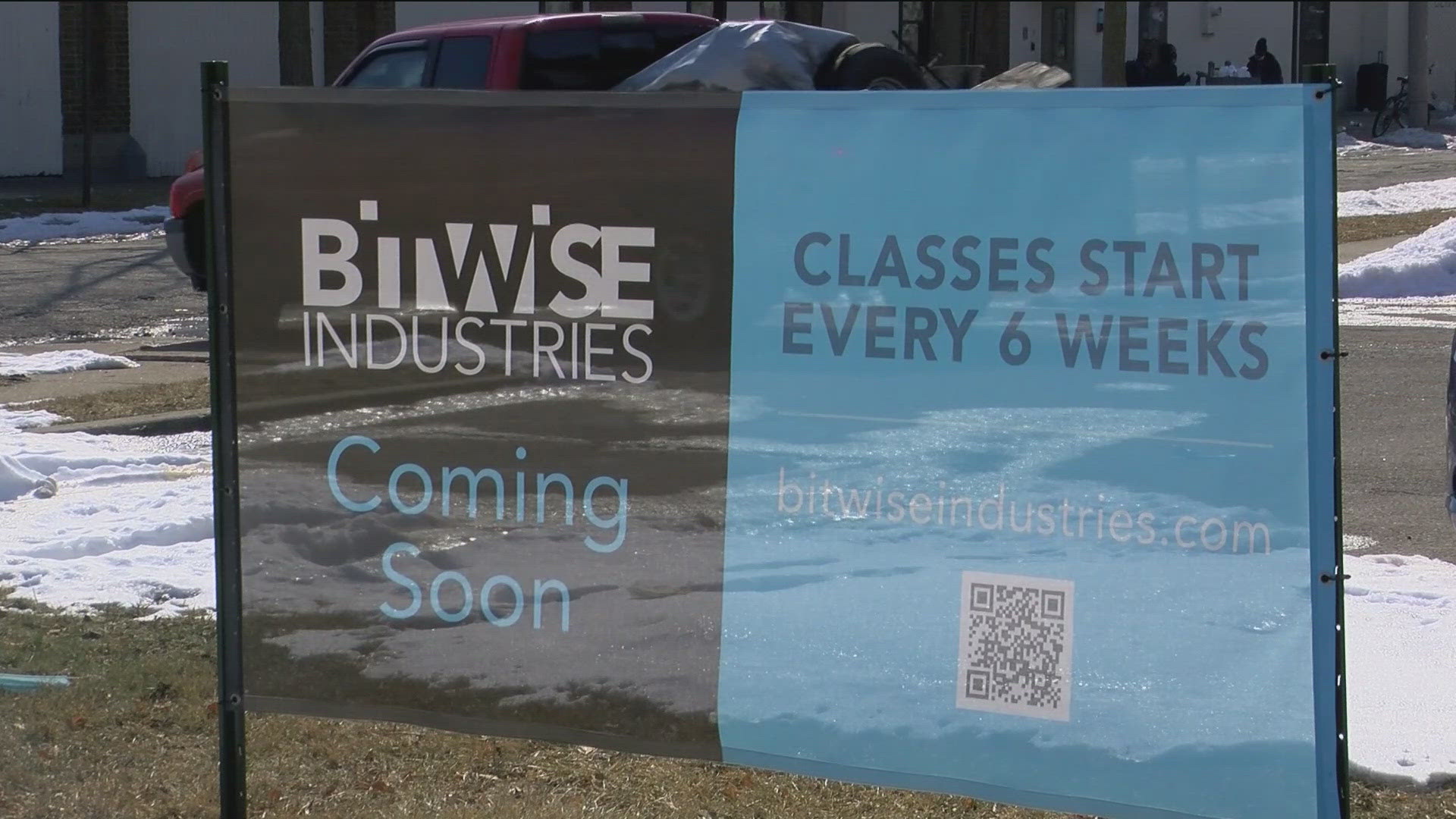



By ALEX BOROFF
Focus Reporter
It's an architectural nightmare. The layout is confusing. There's too many doors. There's too few windows. And the toilets are in the bedrooms.
But the building, the Hancock County Jail, was designed that way for a reason.
With 96 beds, two medical beds, and a number of holding cells, the jail is not designed to be inviting or cozy.
Jim Barker, jail operations lieutenant and training officer at the Hancock County Jail, gave tours of the facility during an after-hours business event hosted at the jail.
Along with other officers, Barker gave tour groups a rare first-hand look inside a building unfamiliar to many.
Inmates entering the jail come in through the sally port, a series of guarded gates, where they are met by a corrections officer. The officer then does an intake screening on the inmate, where they check him or her for physical problems or signs of mental illness.
No inmate will be admitted into the jail if he or she has an injury.
"Once they're ours, the taxpayers of Hancock County are responsible for their medical care," says Barker.
Instead, these inmates are sent to the hospital for treatment. The inmate will be sent back to the jail once he or she is dubbed fit for incarceration.
Once intake is completed, the inmate is sent upstairs to the holding cell. The inmate will be photographed, fingerprinted, and stripped of personal property, which is put away for safekeeping until the inmate is released.
Identifying marks such as tattoos, scars, and even the shoes they are wearing at the time are also photographed for records.
A background check will also be done to see if the inmate is wanted in another state for another crime.
Holding cells surround a control room in the center of the facility.
"Here is probably the busiest station that we have," says Barker.
The officer inside the control room must answer intercom calls from inmates, phone calls coming into the jail, and radio calls from staff. The officer must also operate doors and monitor closed circuit televisions connected to cameras throughout the jail.
Inmates stay in the holding cells until they are brought into the jail to receive their cell assignments.
Those inmates who enter the jail intoxicated are given time to sober up before they enter the jail. They detox inside a cell complete with a concrete bed, floor drain, and a hose outside in case the room needs cleaning.
Before inmates enter their new home, they are deloused and given a uniform. Uniforms are color coded according to the charge.
Orange uniforms are given to felons, blue uniforms are given to misdemeanor offenders. White uniforms are issued to kitchen workers, and black and white striped uniforms are given to outdoor workers.
Inmates are also issued sandals instead of regular tennis shoes.
"Inmates take the shoe strings out and they braid them together to make really strong ropes you can do chin-ups on. So we got rid of that and got velcro ones, but they figured out how to do stuff with that," Barker says. "So now they get a nice pair of flip flops."
Once inside, the inmate is allowed certain limited privileges. An inmate is given two visitation periods each week for 30 minutes at a time.
Inmates are allowed five hours of recreation time per week, although certain activities are restricted. Barker says that disallowing basketball and volleyball cut back inmate injuries significantly.
"Volleyball became dodgeball, and basketball became rugby," Barker says.
Now inmates are given games such as ping-pong and cornhole, along with access to exercise equipment.
Inmates are allowed access to a library for 30 minutes a week, but are not allowed to have hardback books.
"If the inmate takes a hardback book, puts it on the door near the handle, stands back and kicks it, they can pop the lock on the cell door from the outside," Barker says. Since inmates could use hardback books to gain access to each other's cells, these books were replaced with paperbacks.
Officers must regularly check in on inmates. "We do four official counts a day," Barker says. At 11 p.m., inmates are locked down in their cells.
During the day, inmates can spend time in a common area with other inmates. "They have a day space area," Barker says. "They have a TV that they can watch in there that has four channels."
Of the 96 beds, 18 are for females. Only female corrections officers are responsible for female inmates.
Also, violent inmates are kept separate from non-violent offenders.
According to Barker, the average length of stay in the jail is about 17 days, but the jail can hold inmates for up to two years.
Officers on staff go through 60 hours of in-house training and must complete 136 hours of coursework before becoming a certified officer in the state of Ohio.
Corrections officers, it seems, are almost as confined as inmates while on the job. "The staff has to stay on the property for their eight hour shift," Barker says. "They get a paid half-hour break for dinner, but they have to stay on the premises in case we do have a fight, riot, or disorder upstairs.

